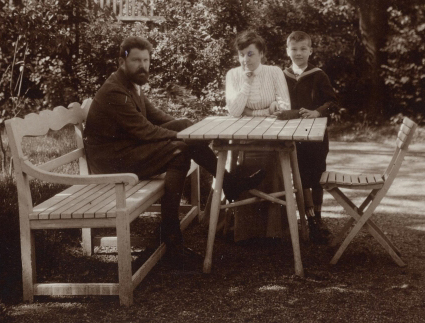
|
|
Title
|
| |
[6 June – 10 August 1901] |
|
Dedication &
Date |
| |
None |
|
Calligraphy |
| |
Black ink, pencil, blue crayon |
|
Paper |
| |
20 staves, J.E. & Cọ,
Nọ 12ª, 20 linig, oblong format,
watermark: WIEN, 262 x 342/3 (r=223)
The watermark, which runs horizontally (but orientated at 180°
to the printed maker's mark) is visible on both folios, and
may have formed the bottom of a larger watermark, perhaps JOS. EBERLE & Cọ
/ WIEN. |
|
Manuscript structure and collation |
| |
|
2 fol.: these are now separate sheets joined together by a
strip of Japanese paper applied to 1r/2v; many (though not all)
creases on either side of the joined edge match up, suggesting
that these two may have once formed a bifolium. If so
there are traces of an earlier repair using strips of paper and
glue applied to the top and lower edges of the sheets is
visible, (similar to the evidence of repairs to the fore-edges
of both sheets). |
|
| |
1r = [Mahler, blue crayon:]
Scherzo
1v = bb. 59–94
2r ≈ bb. 1–58
2v = blank |
|
Provenance |
| |
Ex coll. Wilhelm Legler (part of the Wilhelm Legler Nachlaß at the Wienbibliothek). |
|
Facsimiles |
| |
Complete colour facsimile; complete b&w facsimile: RSGMWI,
46–7 |
|
Select Bibliography |
| |
RSGMWI, no. 15, 42;
SWXIII/4,
xi;
SWXIV/4,
xi |
|
Notes |
| |
This manuscript raises
interesting issues. As indicated above, it is not certain that
its two leaves originally made up a bifolio. And the autograph
'Scherzo' on what is now fol. 1r is interesting: it suggests
that this leaf was once part of a bifolio that functioned as a
wrapper for a short score or sketches for such a symphonic
movement. A likely candidate would be the third movement of the
Fifth Symphony, on which Mahler worked in the summer of 1901. This is a continuous
draft in B minor, with numerous revisions: it was presumably preceded by
sketches that have not come to light. The dating proposed here
is framed by that of Mahler's arrival in Maiernigg (5 June 1901)
and his performance for Natalie Bauer-Lechner of the seven songs
completed that summer (10 August 1901). At some point, this
manuscript (with the leaves arranged as at present) was folded
in half vertically, no doubt so that it could be posted.
minor, with numerous revisions: it was presumably preceded by
sketches that have not come to light. The dating proposed here
is framed by that of Mahler's arrival in Maiernigg (5 June 1901)
and his performance for Natalie Bauer-Lechner of the seven songs
completed that summer (10 August 1901). At some point, this
manuscript (with the leaves arranged as at present) was folded
in half vertically, no doubt so that it could be posted. Wilhelm Legler (1875–1951) was an artist who
studied with Carl Moll, Alma Mahler's stepfather, and married
Alma's half-sister Margarethe (1881–1942) and was hence Gustav's
brother-in-law. They met now and then and the Wienbibliothek
also holds a
copy of the second
issue of the duet arrangement
of Mahler's First Symphony from Legler's collection; he was
presumably given this autograph song draft by Alma Mahler.

Fig. 1: Wilhelm and Grete Legler, with their son,
Willi (c. 1908) |
| |
De La Grange
reports that Alma had converted to Protestantisim in 1900,
'mostly out of sympathy for her half-sister, Gretel, who was
about to marry a Protestant...' (HLGIV,
1031). |
| |
|
|



